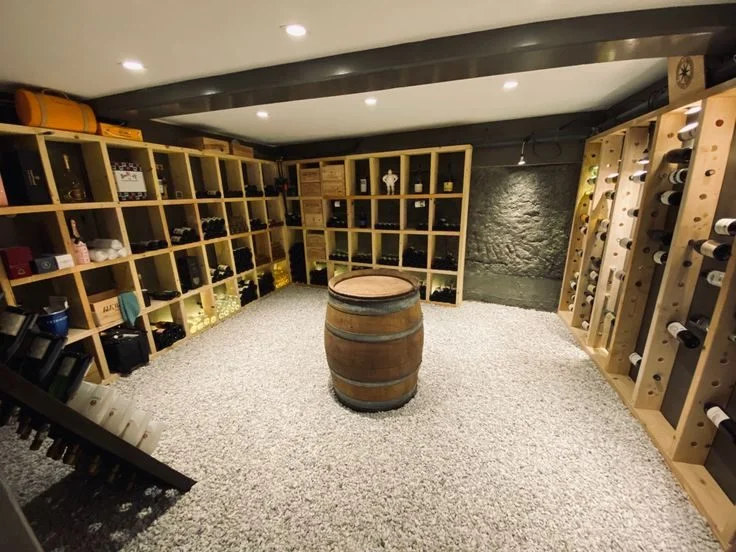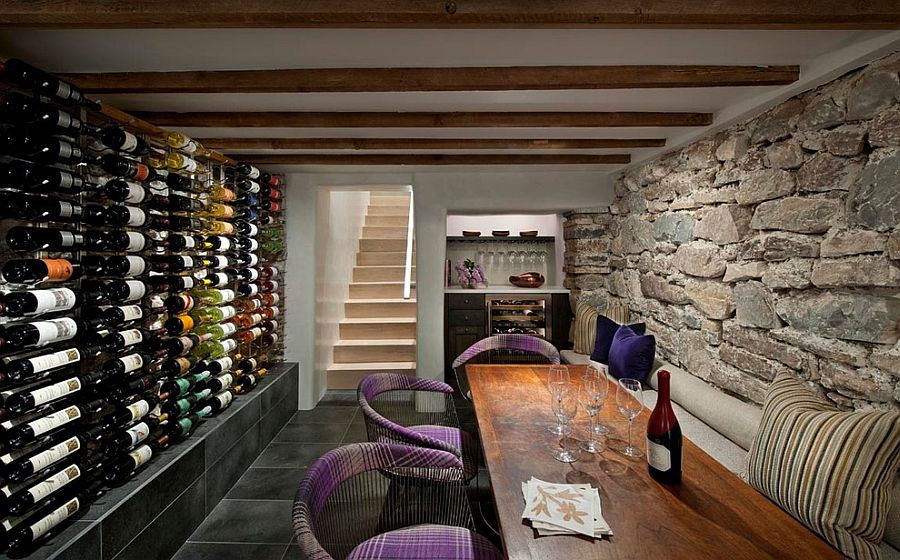Creating a space dedicated to wine at home allows you to store your bottles in the best possible conditions. More and more wine lovers are choosing to install a wine cellar in an unused space such as the garage. This smart choice combines practicality, optimization of space and enhancement of your collection.
If you're interested in wine-related articles, download our app for IOS or Android. It will give you access to our wine lexicon, our articles and our innovative solution, designed for all wine consumers and collectors.
Evaluate available garage space
Before you start, take a look at the size of the garage. Measure floor area, ceiling height and identify any constraints. Avoid areas close to water heaters, boilers or hot lights.
Designing a wine cellar starts with intelligent organization. Reserve an entire wall or corner for storage. This choice will enable you to create a functional garage wine cellar without obstructing the rest of the space.
Control temperature and humidity
A good wine cellar maintains a stable temperature of between 12 and 14°C. Humidity should be between 60 and 75%. These conditions preserve the aromas and balance of the wine.
In a garage, the temperature varies with the seasons. That's why you need to insulate the walls and floor. Use extruded polystyrene or mineral wool insulation panels. Add an airtight door. This limits variations and promotes a stable climate.
Ventilation system
Wine breathes. Cellar air must be kept clean and odor-free. Poor ventilation leads to mold and spoilage. In your garage wine cellar, add a low and a high ventilation grille. This allows a natural flow of air.
If the air remains too dry or too humid, install a humidifier or dehumidifier. Air management is the key to a successful wine cellar layout.
Protect wine from light
Light alters tannins, modifies aromas and accelerates aging. In a wine cellar, darkness remains crucial. A garage with windows requires opaque curtains or anti-UV film.
Use soft, spot lighting, preferably LED. Avoid neon, which is too powerful. Thanks to these precautions, you can avoid oxidation and keep your bottles in optimum condition.
Install suitable storage

Bottles should lie flat, neck down. This keeps the cork moist. Choose sturdy, modular racks. Wood is ideal for absorbing vibrations and regulating humidity.
In your garage wine cellar, prefer horizontal rows. Labels remain visible and handling easy. If you store a lot of references, think about aging cabinets. They complete the wine cellar layout efficiently.
Manage cellar organization
Classify your wines by region, vintage or use. Use labels, an application or a cellar book. This will help you avoid forgetting a bottle that's too old.
A well-structured wine cellar facilitates tastings, gifts and stock rotation. So you stay in control of the evolution of your vintages.
Provide sound and vibration insulation
Vibration disturbs sediments and impairs aging. The garage is sometimes shaken by cars or machinery. Dampen shelves with insulating mats or rubber pads.
As for noise, corks don't like repeated loud noises. Add a soundproof partition if you're working in the garage. You've created a real cocoon for your wines.
Design and accessibility

A wine cellar can also be elegant. Add an aesthetic touch with warm lighting or a glass door. It's the perfect way to showcase your passion.
The layout of the wine cellar must also be practical. Install a shelf for decanting, a cupboard for accessories or a tasting area. This makes your garage wine cellar pleasant and functional.
Securing bottles and space
Wine represents sentimental and financial value. Add a lock, alarm or camera if necessary. This protects your wine and limits unwanted tampering.
You can also install a connected monitoring system. This alerts you to variations in temperature or humidity.
Anticipating the cellar's evolution
Your wine cellar will grow with your passion. Leave some space for new purchases. Be prepared to add modules or storage over time.
The layout of your wine cellar is always open-ended. You can refine the structure according to your tastes, discoveries and desires.
If you enjoyed this article, please feel free to read the following article "Create a thematic cellar: Burgundy, Rhône, or forgotten grape varieties?"which may also be of interest to you!





